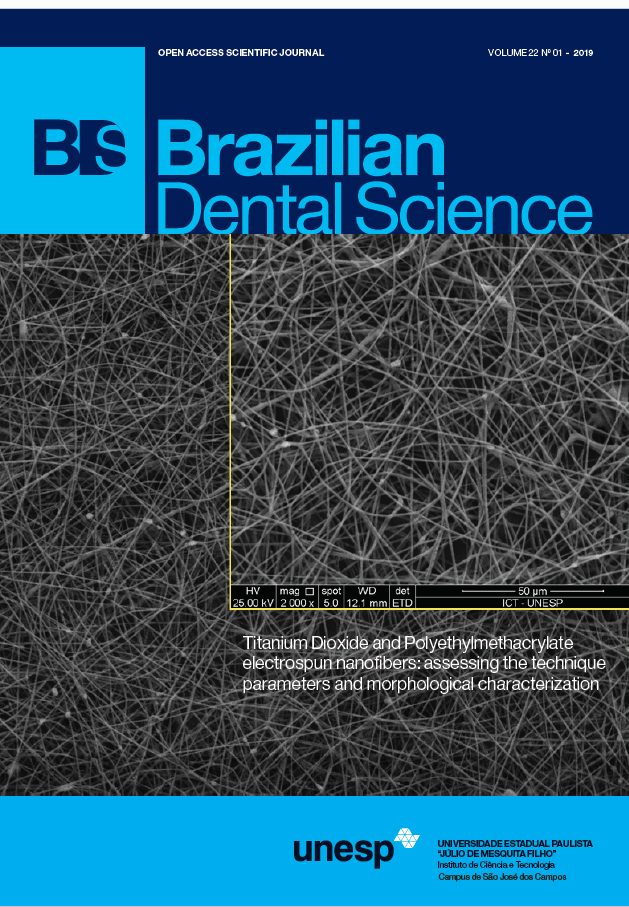Biaxial flexural strength of different types of monolithic zirconia
DOI:
https://doi.org/10.14295/bds.2019.v22i1.1696Resumo
Objective: This study was designed to evaluate the biaxial flexural strength (BFS) of different types of unshaded and shaded monolithic zirconia. Material and Methods: 120 monolithic zirconia ceramic discs were fabricated. They were divided into twelve groups (n=10), Group 1; Bruxzir unshaded, Group 2; Bruxzir shaded A2, Group 3; Bruxzir anterior white, Group 4; Bruxzir anterior shade A2, Group 5; Prettau unshaded, Group 6; Prettau shaded with A2 coloring liquid, Group 7; Prettau anterior white, Group 8; Prettau anterior shaded with A2 coloring liquid, Group 9; Katana HT white, Group 10; Katana HT shade A2, Group 11; Katana ST white, Group 12; Katana ST shade A2. All discs were milled using a dental milling machine, and had final dimensions after sintering of 15 mm diameter and 1 mm thickness. BFS was tested using piston on three ball technique. Results: One-way ANOVA revealed significant differences among the 12 groups. Tukey post-hoc tests revealed no significant differences between the groups 3, 4, ,7 ,8 11, and 12. However, they all had BFS values that are significantly lower than all other groups. Group 2 showed statistically significant higher BFS values when compared to group 3,4, 7, 8, 11, and 12 while it showed statistically significant lower values when compared to groups 1, 5, 6, 9, and 10. Conclusion: Increase in the yttria content in zirconia led to a decrease in its BFS. Shading of zirconia did not have a significant effect on the final strength of zirconia.
Keywords
Dental ceramics; Dental esthetics; Flexural strength; Shaded zirconia.
Downloads
Downloads
Arquivos adicionais
Publicado
Como Citar
Edição
Seção
Licença
TRANSFERÊNCIA DE DIREITOS AUTORAIS E DECLARAÇÃO DE RESPONSABILIDADE
Toda a propriedade de direitos autorais do artigo "____________________________________________________________________" é transferido do autor(es) para a CIÊNCIA ODONTOLÓGICA BRASILEIRA, no caso do trabalho ser publicado. O artigo não foi publicado em outro lugar e não foi submetido simultaneamente para publicação em outra revista.
Vimos por meio deste, atestar que trabalho é original e não apresenta dados manipulados, fraude ou plágio. Fizemos contribuição científica significativa para o estudo e estamos cientes dos dados apresentados e de acordo com a versão final do artigo. Assumimos total responsabilidade pelos aspectos éticos do estudo.
Este texto deve ser impresso e assinado por todos os autores. A versão digitalizada deverá ser apresentada como arquivo suplementar durante o processo de submissão.




























